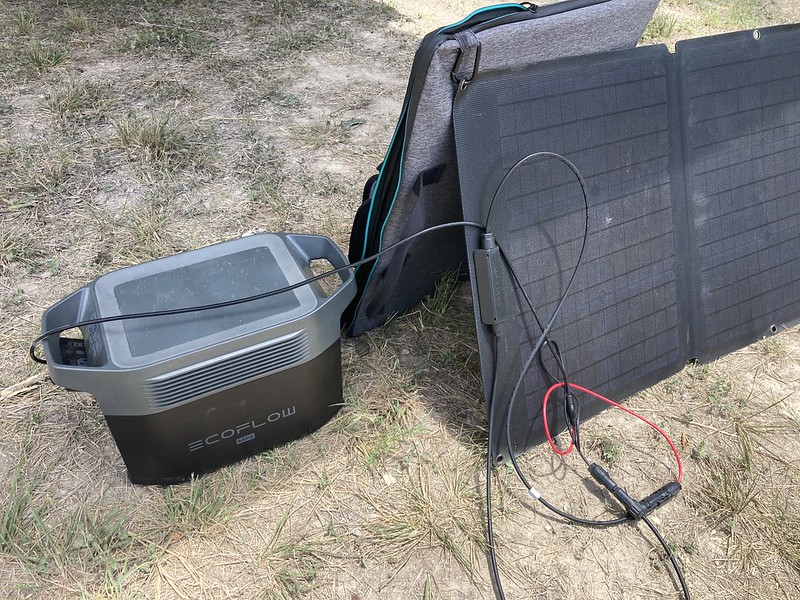Lithium Extraction Gold Rush
Contact
University of Arkansas System Division of Agriculture
Cooperative Extension Service
2301 S. University Ave.
Little Rock, AR 72204

Lithium Extraction Gold Rush
Unless you’ve been paying close attention, it is easy to miss that there is a new gold rush going on. But this time it is for lithium — and south Arkansas is the middle of the bull’s eye for what could be a big deal. A very big deal.
Last week Exxon / Mobile Oil Company announced it has leased 120,000 acres of mineral rights in southwestern Arkansas’ Columbia and Lafayette Counties. The company’s stated intention is to extract enough lithium annually from the brine found in the Smackover Formation to power a million electric cars. They have plans to invest $17 billion in the venture with usable lithium carbonate beginning to be produced in 2027. An ambitious goal for sure, but gold rushes rely heavily on optimism.
While the naysayers shout it will never happen, the world is beginning to switch to electric vehicles (EVs). In 2021, EVs share of worldwide auto sales (combining plug-in hybrids and true battery-powered cars) was 8.3 percent, up from less than 1 percent five years earlier. About 70 percent of these EVs are completely battery powered, and as of now, lithium batteries are the gold standard for providing the stored energy.
American auto executives were asleep on the job and never thought about the implications of outsourcing all of their battery needs to a sometimes-hostile and always-cantankerous country – China. China gets most of its lithium ore from Australia and Chile but produces most of the batteries used in all those EVs. Since about 2018, the U.S. government and auto industry have been trying to play catchup, developing both domestic sources of lithium and building battery manufacturing plants that will begin coming online by 2025.
Lithium is one of the “alkali metals,” along with sodium and potassium, on the left-hand side of the periodic table. It is non-metallic, soft, light weight and batteries made from it have a high electron density. It is not especially rare but is dispersed throughout the earth’s crust. It is found in seawater but at only about one part per million, too low a concentration to extract. Lithium does not appear alone in nature but is always combined with something else. In Australia, lithium is mined by conventional hard rock mining procedures, but the costs associated with this type of recovery are about twice as expensive as lithium extraction from a brine.
In many parts of the world, lithium is concentrated in brine deposits. California’s Salton Sea is one such lithium deposit but lithium-containing brines are also found in the saltwater deposits associated with petroleum deposits. The Smackover Formation, a belt of porous, Jurassic-age limestone rocks extending from east Texas to the Florida panhandle, is thought to be one of the richest natural lithium deposits in the nation. The first oil discoveries were made in south Arkansas in 1921 at about 2,000 feet. The Smackover Formation, about 2,500 feet deeper and a much richer oil recovery zone, was tapped a decade later. It remained in production until the late 1960s.
Brine has been an aggravation for oilmen since the early years of oil extraction. In those days, all that salty water was simply dumped into the nearest creek, but reforms led to the separated brine being pumped back into injection wells, sending it back to the layer from which it was originally extracted. Bromine extraction from Smackover brine has been done since the 1960s, so the idea of extracting something valuable from that salty soup is not new.
The concentration of lithium in the brine varies, but seems to be in the 325 to 350 mg/L (like parts per million) range. In the brine, lithium is combined with the chloride ion. Exxon/Mobile plans to use a process called “direct lithium extraction.” This uses a multiple-step process of filtering, isolating, polishing and then precipitating the lithium as an insoluble lithium carbonate, which is the form sent to the battery manufacturer. The process takes about six hours — at least in the operational test plant that is being used in the El Dorado area. The recovery rate is high — about 89 percent — with the stripped brine injected back into the ground. The challenge for Exxon/Mobile will be to scale up to this new, still relatively untested technology to produce the tonnage of lithium needed.
The lithium story reminds me that things are often circular in this old world. It turns out that Exxon bought the rights to produce the first lithium-ion batteries from its inventor, Dr. Stanley Whittingham, in the 1970s, but shelved the project because they didn’t believe there was a sufficient market for the technology. (Whittingham won the Nobel Prize for the invention in 2019.) Another irony is that after the brine was pumped from the ground a century ago to extract oil, it is again coming up to power our cars with a new and improved technology. Isn’t it a grand and interesting world?
